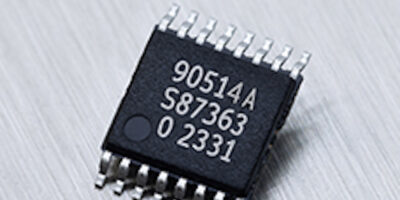Inductive sensor from Melexis that simultaneously reads two sets of coils
Melexis has announced the MLX90514, a dual-input inductive sensor integrated circuit (IC). The device simultaneously processes signals from two sets of coils to compute differential or vernier angles on-chip. This sensor is designed for next-generation automotive applications, particularly in systems such as steering torque feedback, steering angle sensing, or steering rack motor control (including steer-by-wire implementations).
The automotive industry is undergoing a significant transformation driven by electrification, autonomy, and advanced driver-assistance systems (ADAS). These trends are increasing the complexity of vehicle control systems, particularly in systems such as steering torque feedback, steering rack motor control, including steer-by-wire implementations, which demand dual-channel position sensing to deliver accurate torque and angle measurements. Although combining two single-channel ICs or using magnetic sensors has long been the traditional solution for many applications, alternative approaches can reduce system complexity and cost in certain scenarios.
The dual-input MLX90514 directly addresses these challenges by integrating differential and vernier angle calculations on-chip, reducing processing demands on the host system, and enabling smaller, more streamlined sensor designs. This capability is particularly vital as the demand for reliable, cost-effective sensing solutions grows in electrified and alternative mobility applications.
As Melexis’ first dual inductive application-specific standard product (ASSP), the MLX90514 combines flexible interface options—SENT, SPC, and PWM for a standalone module, SPI for embedded modules—with integrated on-chip processing. It can compute complex position information such as differential or vernier angles directly at the sensor, reducing system workload and eliminating the need for multiple ICs, thus reducing design complexity and bill-of-material (BoM) component count. Its SENT/SPC output accommodates up to 24-bit payload, enabling high-fidelity transmission of two synchronised 12-bit channels – essential for high-accuracy torque and angle sensing.




